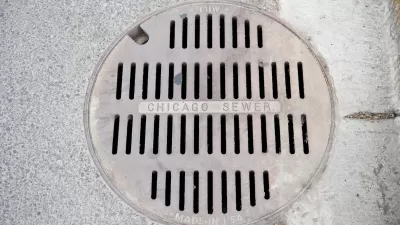Only one coastal city has a sewer system that must handle stormwater as well as wastewater. San Francisco's efforts to adapt its combined sewer-stormwater system has put it on the vanguard of the city's climate adaptation efforts.
"Using combined systems was common practice for urban sewers built before the turn of the 20th century, said [San Francisco Public Utilities Commission] PUC General Manager Harlan Kelly Jr., when wastewater and rainfall both were typically dumped into nearby bodies of water," reports Dominic Fracassa for the San Francisco Chronicle on Oct. 21.
Because the city's sewer system can be easily overwhelmed during heavy downpours, and is vulnerable due to king tides and sea level rise, all of which will become more intense due to climate change, the San Francisco Public Utilities Commission, which provides retail drinking water and wastewater services to the city of San Francisco, is at the forefront of climate adaptation efforts.
The PUC’s improvement program will be rolled out in phases through 2032. The improvements themselves — everything from replacing outdated sewer pipes to raising critical electrical systems in treatment plants in anticipation of the higher sea waters — are designed to respond to how San Francisco’s climate could look in the year 2100.
Another critical element of the PUC plan is an ambitious program of installing bioretention or rain gardens to divert stormwater from the sewer system and allow it to be absorbed into the ground. "[B]y allowing natural processes to take over the work we've been building infrastructure to handle, operations and maintenance costs also fall," according to a 2012 study on green infrastructure co-authored by the American Society of Landscape Architects.
In August, Fracassa reported on a ribbon-cutting by the PUC for the first of the eight rain gardens planned for the Ingleside district, an investment of $7.3 million.
FULL STORY: SF embarking on major projects to bolster sewer system

Planetizen Federal Action Tracker
A weekly monitor of how Trump’s orders and actions are impacting planners and planning in America.

San Francisco's School District Spent $105M To Build Affordable Housing for Teachers — And That's Just the Beginning
SFUSD joins a growing list of school districts using their land holdings to address housing affordability challenges faced by their own employees.

The Tiny, Adorable $7,000 Car Turning Japan Onto EVs
The single seat Mibot charges from a regular plug as quickly as an iPad, and is about half the price of an average EV.

With Protected Lanes, 460% More People Commute by Bike
For those needing more ammo, more data proving what we already knew is here.

In More Metros Than You’d Think, Suburbs are Now More Expensive Than the City
If you're moving to the burbs to save on square footage, data shows you should think again.

The States Losing Rural Delivery Rooms at an Alarming Pace
In some states, as few as 9% of rural hospitals still deliver babies. As a result, rising pre-term births, no adequate pre-term care and "harrowing" close calls are a growing reality.
Urban Design for Planners 1: Software Tools
This six-course series explores essential urban design concepts using open source software and equips planners with the tools they need to participate fully in the urban design process.
Planning for Universal Design
Learn the tools for implementing Universal Design in planning regulations.
Smith Gee Studio
City of Charlotte
City of Camden Redevelopment Agency
City of Astoria
Transportation Research & Education Center (TREC) at Portland State University
US High Speed Rail Association
City of Camden Redevelopment Agency
Municipality of Princeton (NJ)





























